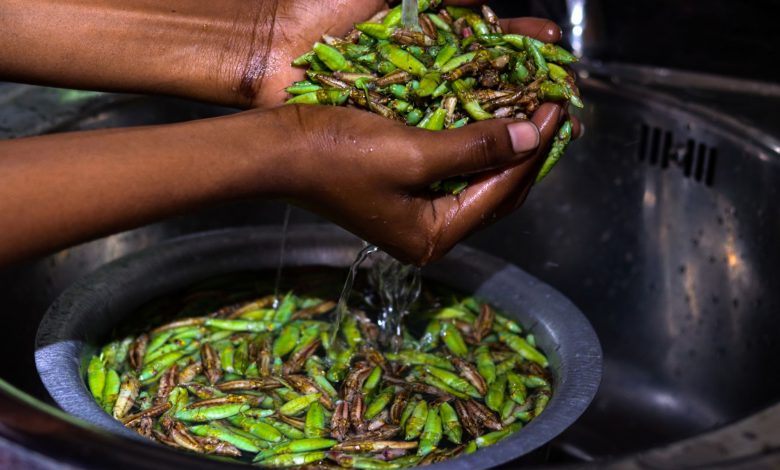NSENENE FEVER: From fields to fryers, grasshopper craze takes over
For many families, 'nsenene' catching is a communal event. Neighbors gather, helping each other set up traps and sharing in the excitement. It's more than just a business; it's a time-honored tradition that brings communities together under the night sky.

In the bustling markets of Kampala, a distinct buzz fills the air every November. It’s nsenene season a time when the green, winged delicacy takes center stage in Ugandan households.
Grasshoppers, known locally as ‘nsenene’, are not just a snack; they’re a cultural phenomenon. But have you ever wondered about the incredible journey of nsenene from the fields to your plate?
Under the cover of darkness, when most are settling in for the night, ‘nsenene’ catchers are gearing up for their busiest time of the year. Armed with bright lights, large drums, and black plastic sheets, they head to the fields, ready to capture the swarms. The tradition of ‘nsenene’ trapping dates back decades, but the methods have evolved significantly.
John Kato, a seasoned ‘nsenene’ catcher from Masaka, has been in the trade for over 20 years. “When I was a child, we used simple nets and lanterns. Now, we use powerful lights that attract thousands of grasshoppers,” he explains. The technique is simple yet effective: lights attract the insects, which then fall into the strategically placed drums below.
For many families, ‘nsenene’ catching is a communal event. Neighbors gather, helping each other set up traps and sharing in the excitement. It’s more than just a business; it’s a time-honored tradition that brings communities together under the night sky.
From the Fields to the Frying Pan
As the sun rises, the catchers’ hard work pays off. The drums are filled with lively, green grasshoppers, ready for the next stage of their journey. But before they make it to the plate, nsenene undergo a meticulous preparation process.
Back in Kampala’s bustling markets, the harvested nsenene are sorted, washed, and plucked of their wings and legs—a delicate process that requires skill and patience. Market vendors like Amina Nakato know the drill all too well. “You have to be gentle yet quick. People want fresh, clean nsenene,” she says with a smile as she deftly handles a pile of the insects.
After cleaning, the nsenene are ready to be fried—a sizzling spectacle that attracts onlookers. The smell of the frying grasshoppers fills the air, drawing in customers eager for a taste. Fried with salt, onions, and sometimes a dash of chili, the crispy nsenene are packed into small bags and sold as snacks.
For those who have never tried nsenene, the thought of eating grasshoppers might seem unusual. But for Ugandans, it’s a seasonal delicacy they look forward to. High in protein and rich in flavor, nsenene have a crunchy, nutty taste that many compare to roasted nuts or shrimp.
At local restaurants, chefs are getting creative, incorporating nsenene into modern dishes. Chef David Mwangi, known for his innovative cuisine, recently introduced a special nsenene salad. “People are always surprised by how good it tastes,” he says. “The texture is perfect, and it adds a unique flavor to the dish.”
An Economic Lifeline for Many
Beyond its culinary appeal, nsenene is a significant economic driver during the harvest season. For small-scale traders, a single night of successful catching can yield profits that sustain their families for weeks. The seasonal boom brings a festive atmosphere to the markets, with buyers and sellers haggling over the freshest batch.
Esther Nakiwala, a vendor at Nakasero Market, shares her story: “I’ve been selling nsenene for 15 years. This business has helped me pay school fees for my children and take care of my home. When the season comes, I know I’ll make good money.”
The journey of nsenene from field to plate is a testament to the deep-rooted traditions of Ugandan culture. It’s a story of hard work, community spirit, and a love for a unique delicacy that has stood the test of time.
So, the next time you pop a crispy nsenene into your mouth, remember the long journey it has taken to get there—from the dark fields of Masaka to the sizzling pans of Kampala’s markets. It’s not just a snack; it’s a taste of Uganda’s heritage.







